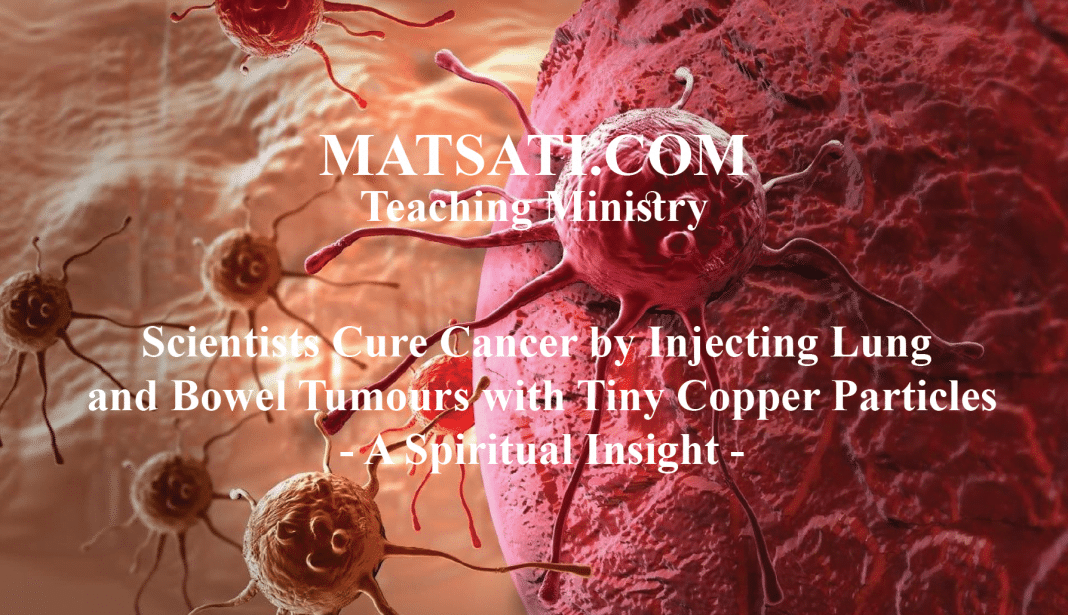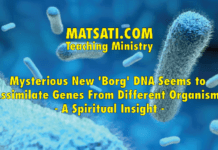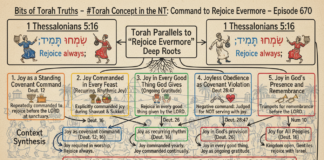Scientists from the University of Bremen and the University of Ioannina have been successful in killing tumor cells in mice using copper nanoparticles coupled with immunotherapy. [1] Immunotherapy is a form of cancer treatment that aids the immune system in the fight against cancer. The immune system works to fight infections and other diseases in the human body. This is a type of biological therapy where one uses one’s own body to help fight off cancer. We had talked about immunotherapy in a previous article, read more here. Scientists studying immunotherapy have learned that this therapy is not always successful to remove cancer and disease. Researchers are looking for new ways to fight cancer and have found that tumors in particular are responsive to copper oxide nanoparticles. The mechanism involved is once the copper oxide nanoparticles are inside of a tumor, they dissolve and become toxic to the tumor. The copper oxide was used because it was effective to eliminate cancer cells while leaving healthy cells unaffected.
References
- Hendrik Naatz, Bella B. Manshian, Carla Rios Luci, Vasiliki Tsikourkitoudi, Yiannis Deligiannakis, Johannes Birkenstock, Suman Pokhrel, Lutz Mädler, Stefaan J. Soenen. Model-Based Nanoengineered Pharmacokinetics of Iron-Doped Copper Oxide for Nanomedical Applications. Angewandte Chemie International Edition, 2020; DOI: http://dx.doi.org/10.1002/anie.201912312
Initially, the researchers were looking at the use of the copper oxide nanoparticles to eliminate the tumors without any additional help. Testing with the copper oxide only resulted in destruction of the tumour cells directly. However, following the treatment, using only the nanoparticles, the cancer returned. This led to the combined technique of both copper oxide particles and immunotherapy. The combined use of nanoparticles with the immunotherapy led to the complete removal of the cancer and the cancer did not return.
The published paper [1] states a review of “nanomedicine technology” revealed only 0.7% of administered drugs were able to reach the tumor. This limits the effectiveness of the method. Researchers looking at nanoparticles as a biological weapon against disease, needed to look for carriers that are insoluble to the microenvironment. They found dissolving nanoparticles can act as both a carrier and a drug. Metal oxides from flame aerosol technology such as CuO, ZnO, and WO3 release metal ions M(z+) when they are exposed to biotic/abiotic environments. This means that the metals are released, they reduce (redox, reduction reaction) to the metal cation and then form covalent complexation with proteins/amino acids. The complexation process results in a charge transfer from the metal to the organic molecule forming a new species. Because large quantities of Cu can be toxic, this required an engineering strategy that enabled the fine tuning of the release of the Cu cation that complexes with the cellular components. The materials development of the nanoparticle allowed a controlled release of Cu cations, and then when administered locally (injected directly into the tumor) demonstrated the ability to target cancer cells and also activate an anti-cancer immune response. Differences in the cellular environment (pH, metabolism, nutrient rich: amino acids, proteins, vitamins, and/or phosphates) affect the dissolution kinetics of metal oxides, in this case CuO nanoparticles. Researchers postulated that a kinetic design on the particle side, through Fe‐doping, opens a therapeutic window for cancer treatment. This required a release that is fast enough to target cancer cells, but significantly slowed down in normal cells such that regulatory mechanisms can handle the stress and not kill healthy cells. Researchers then studied the effect of Fe-doping, by developing 1, 6, and 10 % Fe‐doped CuO in 5 mM valine solutions. Experimentation on these iron-copper oxides revealed two release processes occurring for the 6 and 10% Fe-doped CuO where there was an initial fast release and then a later slower long-term release from the bulk. Based on the measured data on the release characteristics of the Cu cation, the kinetics were obtained and a model was developed in order to understand and predict the differences in Cu cation release from the pure and the Fe-doped CuO nanoparticles. The Fe-doped CuO nanoparticles were then tested in vivo that resulted in complete tumor remission in multiple syngeneic subcutaneous mouse models.
The researchers state that this technique can be used for about 60% of all cancers, given that the cancer cells are derived from a mutation in the p53 gene (i.e. lung, breast, ovarian, and colon cancer). The importance of this research is the therapeutic technique causes tumors to disappear without the use of chemotherapy, which typically comes with major side effects. Chemotherapy drugs attack cancer cells and healthy cells alike destroying the body. The next step is to look at human patient tissue studies. If the results are the same, this will lead to clinical trials. The major challenge for this field of research is the nanoparticle technology is a Chemical Engineering discipline, whereas the biological system is generally related to medical doctors (MD). Each discipline often speaks in different terms (or different language). This is why interdisciplinary collaboration is necessary to break down the language barrier and build upon each other’s knowledge.
The Spiritual Insight that we receive from this type of research is related to something the Lord God Almighty told Moshe according to the Torah! In Shemot / Exodus 25:8 we read the following:
Shemot / Exodus 25:8
וְעָ֥שׂוּ לִ֖י מִקְדָּ֑שׁ וְשָׁכַנְתִּ֖י בְּתוֹכָֽם׃
And let them make Me a sanctuary that I may dwell among them.
According to the commentary “Alshich on Torah,” Shemot / Exodus 25:8 Parts 1-15 the rabbis write on the meaning of “And I will dwell in their midst.” They say this literally means “in them.” In other words, the Shechinah (glory of God) was not to settle upon the inanimate materials of the Tabernacle but upon בני ישראל (B’nai Yisrael, Children of Israel) themselves, provided that they conducted themselves appropriately. This is reflected in the blessing Moshe gave them when the work of the Tabernacle was completed saying, “May the pleasantness of our God be upon us” (Tehillim / Psalms 90:17, see Rashi on 39:43). Basically, from the rabbinic commentaries, we understand that the Hebrew words which translate to say, “Let them construct a sanctuary for Me, that I may dwell among them,” could be translated, “Let them construct a sanctuary for Me, that I may dwell within them” (Shemot / Exodus 25:8). The idea is had Israel been worthy, no Tabernacle would have been necessary. The Divine Presence, the glory of God, which came to rest in the Tabernacle would have rested within each individual. Note how the commentary Or HaChaim writes on Shemot / Exodus 25:8 pointing out this very thing!
Or HaChaim on Shemot / Exodus 25:8 Part 3
That I may dwell among (within) them: It does not say “within it,” which means that the place that God will sanctify to dwell there is within the children of Israel that encircle the Tabernacle with four banners.
Here, the implication of this interpretation on Shemot / Exodus 25:8 is that God spoke about taking up residence amongst the Jewish people, not merely as a consequence of building the Mishkhan (Tabernacle) but that he will literally “dwell in their midst” or “dwell within them.” The message that is being given here is related to the concept of sanctity, not just of the place of the Tabernacle, but in each individual person in the community of God. This then draws in the concept of sin (disobedience) as opposed to righteousness (obedience). Sin can be analogized to the cancer in the human body that grows out of control eventually causing the death of the body. The research demonstrates something external needed to enter into the tumor in order for it to be destroyed (eradicated). In parallel fashion, the Lord God Almighty dwelling in our midst, literally dwelling within us by His Spirit, causes us to overcome the world, and to overcome sin in our lives.
This is the message of the Gospel jumping out at us right from the pages of the Torah!
Based upon the Torah, God’s presence is attracted to every individual because of His great love for us. The Rabbis say (Or HaChaim on Shemot / Exodus 25:9 Part 8) that God’s presence is attracted to even a single individual who occupies himself with the words of Torah based on Shemot / Exodus 20:21 where God say, “wherever I allow My name to be mentioned I will come to you and bless you.”
Yeshua the Messiah brought these concepts to their completion, literally. Yeshua said that the Lord God had prepared a body for him, and how this body was the temple of God saying, “Destroy this Temple, and in three days I will raise it up again” (John 2:19). In parallel fashion to what we find the rabbis speaking about concerning Shemot / Exodus 25:8, the presence of God, the divine presence dwelling within the human body, Yeshua said His body was a spiritual Temple, the holy dwelling place of God, as the Apostle John interpreted saying, “He was speaking of the temple of His body.” (John 2:21)
The kabbalistic approach to אֵת תַּבְנִית הַמִּשְׁכָּן וְאֵת תַּבְנִית כָּל-כֵּלָיו וְכֵן תַּעֲשֹוּ, “the pattern of the Tabernacle, and the pattern of all its vessels,” is that the various components of the Tabernacle on earth were replicas of concepts which exist in the higher regions. The Tabernacle being divided into three sections is an allusion to this, (1) The area beyond the dividing curtain, the western part; (2) the area in front of the dividing curtain known as אהל מועד. (ohel moed); and (3) The courtyard in front of the Tabernacle which was enclosed by curtains. These three sections symbolized the three parts of the cosmos, (i) the world of the disembodied beings, the angels; (ii) the world of the inert bodies, the stars and the planets; (iii) our terrestrial universe, inhabited by living creatures with bodies. (Rabbeinu Bahya, Shemot / Exodus 25:9 Parts 1-2) The mystical teachings of the rabbis also parallel the greatest achievement of God in creating man in the lower world, how man is also composed of three parts representing the division of the universe into three parts (like described above). This is why man is called a microcosm, a world in miniature, by the sages (see the commentary from Rabeinu Bahya on Bereshit / Genesis 1:27 for more details on this). The three parts are: (1) the world of דִבּוּר (speech), creatures capable of verbal communications. (2) the world of חַיוּת (liveliness), all kinds of living and moving creatures. (3) the world of vegetation, life and motion limited to the roots of these plants in the soil. The innermost part of the Tabernacle (the Holy of Holies) with the Ark of the Covenant, the Tablets, the Cherubim, all of these things remain hidden, this is the dwelling place of the Shechinah within the hidden part of a man. This attribute has also been described as dwelling of cherubs in Tehillim / Psalms 80:2. This part of the Tabernacle was patterned after the celestial regions, the home of the angels. It is not visible, partly because they are disembodied spirits, forming the entourage and throne of God. Man’s equivalent to that part of the cosmos is his head, i.e. what is inside it, his brain; it is the Temple of his wisdom, and it is the region in which disembodied שֶׂכֶל (intellect), intelligence, makes its impact on man’s brain. The rabbis say a truly righteous man is himself an entourage for the Divine Presence. The second part of the Tabernacle, outside of the curtain, which contained the Menorah, the Table, the Altar of Incense, corresponds to the planets and the stars of the known visible universe. This part of the Tabernacle is characterized as the heart, the internal organ which brings life to the body, without which the body could not function. The third part of the Tabernacle, the courtyard contains the copper altar, and the animal sacrifices. This corresponds to the earth, which illustrates life and death, meaning the loss of life is simultaneously the cause of its coming into existence. If our world were not condemned to the death of its inhabitants there would be no need for newness of life to be generated. This speaks to the concept of resurrection and life! The commentary Rabbeinu Bahya, Shemot / Exodus 25:9 Parts 1-2 states the following:
Rabbeinu Bahya, Shemot 25:9:1-2
A Midrashic approach: the words אֵת תַּבְנִית הַמִּשְׁכָּן וְאֵת תַּבְנִית כָּל-כֵּלָיו teach that G’d had shown to Moses “green fire, black fire, white fire, and red fire.” He now told him: “in accordance with all that I have shown you” (verse 40). He instructed him: “construct it like this.” The matter can be illustrated by means of a parable. A King had a very costly pearl-studded garment. He instructed one of his servants to make him another one like it. The servant replied: ‘My lord king where am I going to get the raw materials to make another garment such as this?’ This is precisely what Moses asked G’d: “where am I going to take green fire, black fire, white fire and red fire from in order to construct a replica of the cosmos?” G’d said to him: “You do the best you can with the materials at your disposal.” Not only that. But, “if you will construct something comparable to what you have seen in My celestial spheres down on earth, I shall leave My celestial court and confine My Shechinah to the extent necessary in order to take up residence in the Tabernacle you will construct on earth.” Just as in the celestial regions there are upright standing Seraphim (angels) so on earth there will be upright standing columns of acacia wood (compare 26,15). Just as there are stars in the heavens there are stars down on earth.” Rabbi Chiyah added: “this teaches that the golden clasps appeared like stars on the carpets forming the ceiling of the Tabernacle.”
Rabbeinu Bahya speaks of spiritual counterparts, what is in heaven, is to be modeled down on earth. This is consistent with what Yeshua taught his disciples saying you are to pray “Our Father who is in heaven, hollowed is your name, thy kingdom come, they will be done on earth as it is in heaven…” (Matthew 6:9-13, Luke 11:2-4) These things speak towards the spiritual connection of the Mishkhan (Tabernacle) to the dwelling place of God, and the physical body. Ultimately, the Lord God Almighty has created a dwelling place for Himself which is to be contained within the Human body! The imagery we receive from the Torah coupled with the rabbinic literature show the plan of God according to the Gospel, which speaks to the Messiah who would lay his life down as a sacrifice for our sins, and we by faith would receive the Holy Spirit of God such that we would have fellowship with God, communion with God, a relationship with God, and the Lord God would put to death the sin that is in our lives, meaning that the Lord God Almighty Himself would help us to overcome the world! The destruction of the Temple is paralleled to the suffering and death of the Messiah! It is in this way that the Holy Temple of God, the Tabernacle, and Yeshua share a mystical connection. Notice how the NT teachings of the Messiah who bore our sins to make atonement on our behalf before God falls within the confines of Judaism and the Torah! The significance of these statements is found in the absolute necessity for us to come to the Father in heaven in the Name of His Son Yeshua! The body of the Messiah parallels the Temple, and Yeshua’s disciples are also metaphorically called “His body.” Therefore, we also are collectively called the Temple of the Holy Spirit. This is why Paul spoke of these things over and over again in 1st and 2nd Corinthians.
1 Corinthians 6:19
Do you not know that your bodies are temples of the Holy Spirit, who is in you, whom you have received from God? You are not your own; (NIV)
2 Corinthians 6:16
What agreement is there between the temple of God and idols? For we are the temple of the living God. As God has said: “I will live with them and walk among them, and I will be their God, and they will be my people.” (NIV)
Paul repeatedly wrote that we are the Temple of God because of the Holy Spirit dwelling within! This draws in the meaning of John 4:21-23 which states, “21 Jesus said to her, Woman, believe Me, an hour is coming when neither in this mountain nor in Jerusalem will you worship the Father. 22 You worship what you do not know; we worship what we know, for salvation is from the Jews. 23 But an hour is coming, and now is, when the true worshipers will worship the Father in spirit and truth; for such people the Father seeks to be His worshipers.” Note how these things do not supplant the legitimacy of the Temple in Jerusalem. Our status as the temple of God is metaphorical speaking to the sanctity of our lives, our thoughts, our bodies illustrating how we are to walk in God’s ways according to His Word because He is dwelling in our midst! This is also how Yeshua sanctifies us by the power of His blood, and the indwelling of God’s Holy Spirit! Note what John writes in Revelation 21:22 saying, “I saw no temple in it, for the LORD God the Almighty and the Lamb are its temple” which means in the Olam Haba (the world to come) there will be no Temple because the Messiah Himself will be the Temple in the New Jerusalem. This is the blessing of the promise that we have in the Messiah according to the Torah and these are the things modern science draws out for us according to God’s Word!









